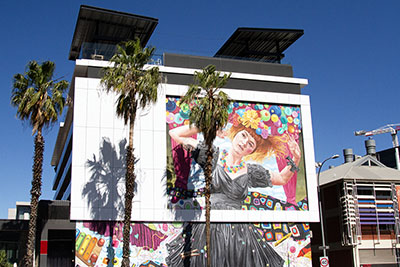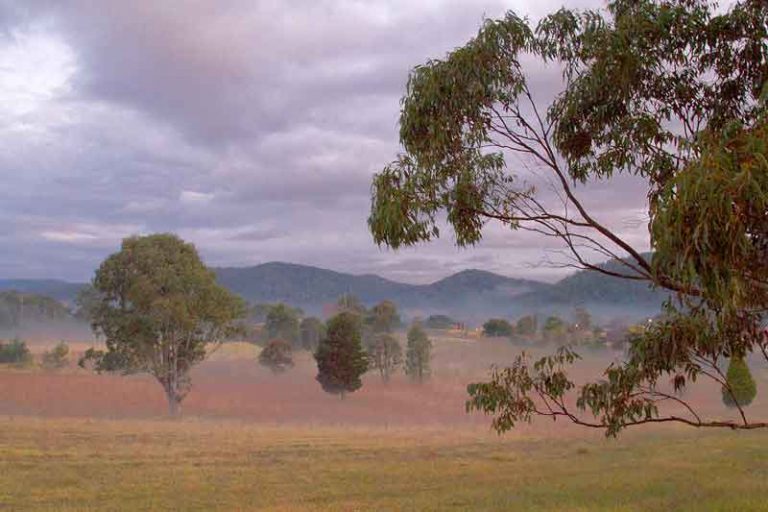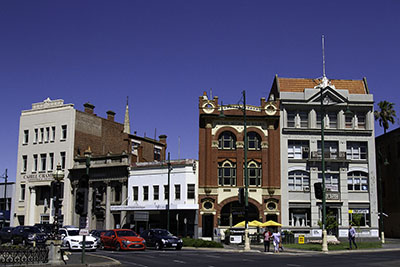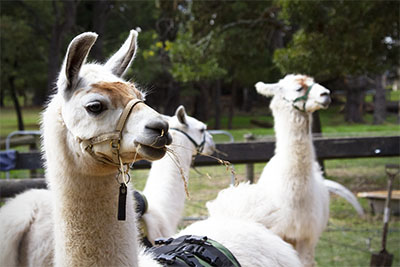Beach safety in Australia: what you need to know
Beach safety in Australia: If you’re spending any time in the water on your trip to Australia, this is absolutely something that you need to know. Read on for some tips for staying safe in Aussie oceans.

Australian beaches. They’re beautiful, but they’re also deadly.
It would be silly to travel to Australia in the summer months and not visit a beach.
The country does have 10,000 of them after all and they are very nice.
I would even go so far as saying that after travelling extensively, I still believe Australia boasts the best beaches in the world – although as an Aussie, there’s a certain bias to that, for sure.
However, rules for beach going around the world don’t necessary apply in Australia.
Our surf can get rough and there are often predators lurking unseen offshore, who can make your day at the beach take an unpleasant turn.
Here are a few things to keep in mind if you plan on spending some time at the beach, which will keep you safe and happy.
And here’s a guide to what to pack for Australia.
Top tips for beach safety in Australia

Get Around Quickly
ALWAYS swim between the flags
Beach safety Australia rule number one. ALWAYS swim between the flags.
Popular, patrolled Australian beaches will have a section marked by two yellow and red flags.
This is deemed the safest part of the beach to swim in, determined b lifeguards, who know the beach and its currents.
So, for the love of all that is good in this world, please swim between the flags.

Look for safety signs
At some beaches, you will see other flags of different colouring and if you’re not familiar with Australian beach safety, you’ll wonder what they mean.
A red flag indicates that the beach is closed. This could be due to any number of things – rough currents, box jellyfish, sharks, crocs. Don’t swim there.
A black and white flag indicates that board riding and surfing is current not permitted at that particular beach.
A yellow flag indicates that there are potential hazards in the water. This could be rough surf or dangerous currents and undertows. In this case you’re allowed in the water, but should exercise extreme caution.
There are a few other signs you’ll find at water sources across the country.

Don’t panic if you find yourself in a rip
A rip current or “rip” for short is a narrow band of water which, if you get stuck in it, will pull you out into the ocean.
Strong swimmers are able to escape rips. You don’t panic, but float against the current before swimming parallel to shore (often towards breaking waves).
However if you’re not a good swimmer or are concerned about your own ability faced against the rip, enlist in the help of the lifeguards. That’s what they’re there for, after all!
Don’t fight the rip current. It is futile and you’ll waste energy. Either stick your hand up and call for help, or float on your back.
If you see someone who has been caught by a rip, immediately alert a lifeguard or call 000 – the national emergency number in Australia.

Don’t go in too deep if you’re not a strong swimmer
Most Australians (at least those who live on the coast) learn to swim around the time they learn to walk.
I’m one of these such people. My parents had a backyard swimming pool and I remember my Dad teaching me how to swim, when I was a tiny tot.
I had swimming lessons at school for years and swam squad (so, doing endless laps of the local swimming pool for hours) after school until I was about 14.
That’s pretty much the standard story of most people of my generation at least.
All that being said… I am still very wary of the ocean waves.
This is largely due to a residue of emotional scarring where I got routinely dumped by waves in my teens and emerged, only to find that my bikini top had moved during the event and I was unwillingly flashing all around me.
I’ve since strayed away from wearing string bikinis at the beach, but the fear runs deep.
However, it is mostly due to respect for the ocean and for my own well-being.
If you don’t go in too deep, you won’t run into trouble.

Beach safety Australia 101: Don’t swim alone
It never hurts to have a buddy nearby. Swimming with a friend guarantees that there will be someone looking out for you, should you run into trouble.
There’s also the bonus of having someone to look after your stuff, should you want to take a quick dip in the ocean.
I’ve admittedly gone to beaches alone many times in the past, but often make friends with people sitting nearby.
Australians are a friendly bunch and it’s nice to know that there might be someone looking out for you, should something go wrong.

Don’t swim after drinking
You know when you down a few beers and then have this amazing idea to go skinny dipping at the beach?
Just don’t. Don’t do it.
Beaches are obviously not patrolled at night and the surf could be wild. It’s an incredibly stupid thing to do.
Even during the day, thinking twice before drinking and entering the water.
You really do need your wits about you when swimming in Australia and alcohol will obviously seriously impair your ability to think straight.

Be wary of unpatrolled beaches
Australia has more beaches than people to patrol them, or even visit them.
Beaches in the cities are pretty well populated, but the further up the coast you go, the greater your chances of finding a beach with minimal people on it… sometimes none at all.
I’m not saying that you should about-turn and march right back to your car. There’s something really nice and peaceful about having a beach all to your lonesome.
Just be VERY CAREFUL.
Don’t go too far into the ocean. In these instances, I’ve mostly gone for walks or had a little lie on the beach, venturing in up to my knees at most.
And if the surf looks rough, don’t go in at all.

Watch out for bluebottles…
Perhaps the most joyful thing about Aussie beaches is that it’s not only the waves that can harm you, yay. Beach safety Australia concerns what’s IN and around the water, too.
The most common issue which is thankfully not life-threatening, is the presence of bluebottles.
These pesky creatures often wash up onshore during the summer months and if you step on them or interact with them within the water, you will probably get stung.
It hurts like hell, but it isn’t fatal and there are no weird side effects to speak of.
If you do get stung, don’t rub the area. Pick any remnants of the creature of your skin and seek treatment immediately.
There is an old wives tale stating that the best thing to do with the sting is to urinate on it. Um, don’t do that, please.
Instead, immerse the affected area in hot water, or apply ice to help with the pain.
It should fade in around 30 minutes, so be brave until then.
& crocodiles…
Crocodiles can also be found on beaches in the north, as well as other water sources (billabongs, rivers and creeks).
Definitely consider that, if you’re hanging around any unattended beaches.
I wouldn’t do so, personally, because I enjoy not getting bitten by these rather frightening creatures.
No fun!

…&, ah, sharks
Slightly more concerning is the presence of sharks around Australian waters, notably on the West Coast.
Look, shark attacks are rare.
You’ve definitely got more of a chance of dying in a car accident, than by shark attack.
So, you’d be supremely unlucky to be involved in a shark attack.
Yet, it does occasionally happen. Every time you enter the water, you are stepping into their territory.
This is why it is of paramount importance to swim on patrolled beaches.
It is the job of the lifeguards to look out for these kinds of things and you’re in a far safer position if you stick to the rules put in place on Australian beaches.

Slip, slop, slap, seek & slide
Do you want to know what the biggest killer is on Australian beaches?
It’s the sun.
Australia has the highest rate of skin cancer in the world, with melanoma being the fourth most common cancer in the country.
More people die of skin cancer than they do of fatal car accidents in Australia.
So, the Australian sun has a deadly bite.
If you’re heading to the beach, make sure you bring a hat, sunglasses, protective clothing and smother yourself in sunscreen – preferably a non-toxic one which won’t damage our coral reefs.
The heading of this paragraph is something we’re all taught as kids, in regards to the dangers of the sun – slip on a shirt, slop on the sunscreen, slap on a hat, seek shade and slide on sunnies.
Consider this a very important factor in beach safety Australia.
In fact, in the summer months I tend to wear sunscreen everyday – particularly on my face.
Most BB creams have at least 15+ and spread on like foundation.
So, I’m protected by the sun and get a clear complexion to boot, woot!

Avoid the sun during high UV hours
I’m not saying you need to stay indoors for the entirety of your time in Australia. That would be a waste.
It’s best to avoid going out in the sun when it’s at its most dangerous, generally during the hours of 11-2pm.
If you’re spending the day at the beach, find a tree you can recline under to read your book, or pitch an umbrella or tent.
Keep out of the sun’s harmless rays and look after your skin.

Don’t bother planning a trip up north in the warmer months if you want to go to the beach
Do you have dreams of frolicking amongst the waves in Far-North Queensland or the Northern Territory in the summer months?
Turns out that a dream is all it’s ever going to be. This is because it’s during the summer that a species known as the Box Jellyfish descend upon the north.
The venom of these tiny creatures is among the most deadly in the world.
It attacks the nervous system, meaning those unlucky souls who are stung often have heart attacks before reaching the shore.
It’s an incredibly painful way to die and is best avoided at all costs.
These jellyfish likes warmer temperatures and so most of the beaches up north are closed for the summer due to this threat.
Climate change could see them migrating further south, meaning it might not just be the far north that’s affected by this issue during the warmer months.
Another thing to look forward to in the future along with the myriad of other problems, hurrah.
Despite the fact that we just ended on a very low note, I hope this article doesn’t put you off spending a considerable amount of your summer holiday at the beach.
As I stated earlier and hopefully some of these photos demonstrate, Australian beaches are a bit of an all right.
Beach safety in Australia mostly comes down to common sense. Use sunscreen, beware of our deadly animals friends and swim between the flags.
Heading to Australia for a beach holiday? Check out these posts:
- Best beaches in Newcastle & Lake Macquarie NSW
- Where to stay in Sydney
- Why summer is the worst time to visit Australia
- 30+ things to do in Perth
- Perth to Kalbarri road trip: 5 day itinerary








Great post! Too often I see people not really listening about how strong the sun is and just slather on (if any) SPF 20 on their body. Also did you know that they expanded the jingle? It is now slip slop slap seek and slide! Definitely does not have the same ring though!
Thanks Nat! It’s funny, I was at the beach when I was in India and suddenly thought – gee, this is a different experience from beaching at home, which gave me the idea for this post. It’s good they did expands the jingle, I don’t think many consider UV damage to the eyes just by going out and about. I know I didn’t until my optometrist warned me about it.
Good post, our beaches can be very dangerous. In North Qld and NT, crocs can and will swim in open ocean, and a 4m salty is considered small! Don’t walk near water when visiting unpatrolled beaches in croc country.
Ugggh, I don’t even want to think about crocs (luckily, live in Victoria, so don’t have to!). Shudder.